I've been eating more and more amaranth in the past few years, for some reason I forgot I could wilt it like spinach. For a year or two all I did was put it in salads, and then it needs to be blended with other greens. If you use it raw, it can be a little tough for some people, even if it's only the young clouches/tender tops.
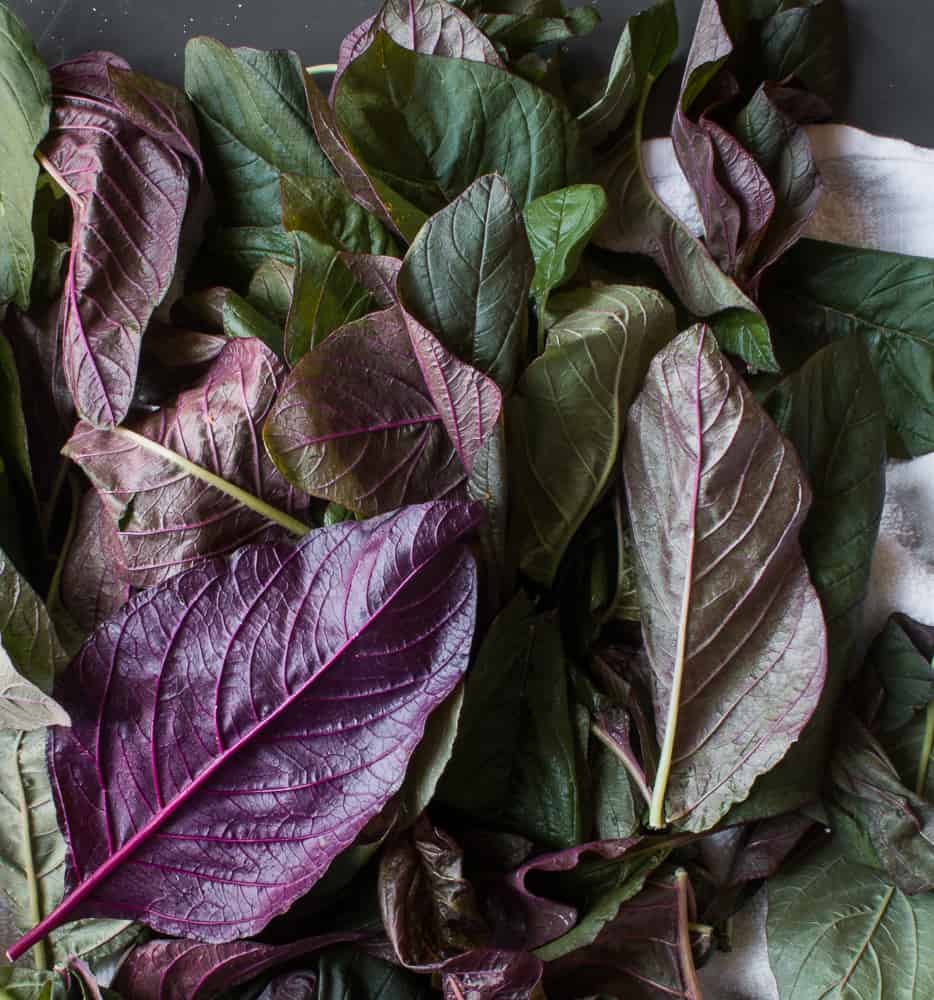
I was reminded how good it is cooked after a dinner where foreign exchange students came to a my girlfriend's farm near Menomonie for dinner. The guests ended up all being female culinary entrepreneurs from different parts of Africa.
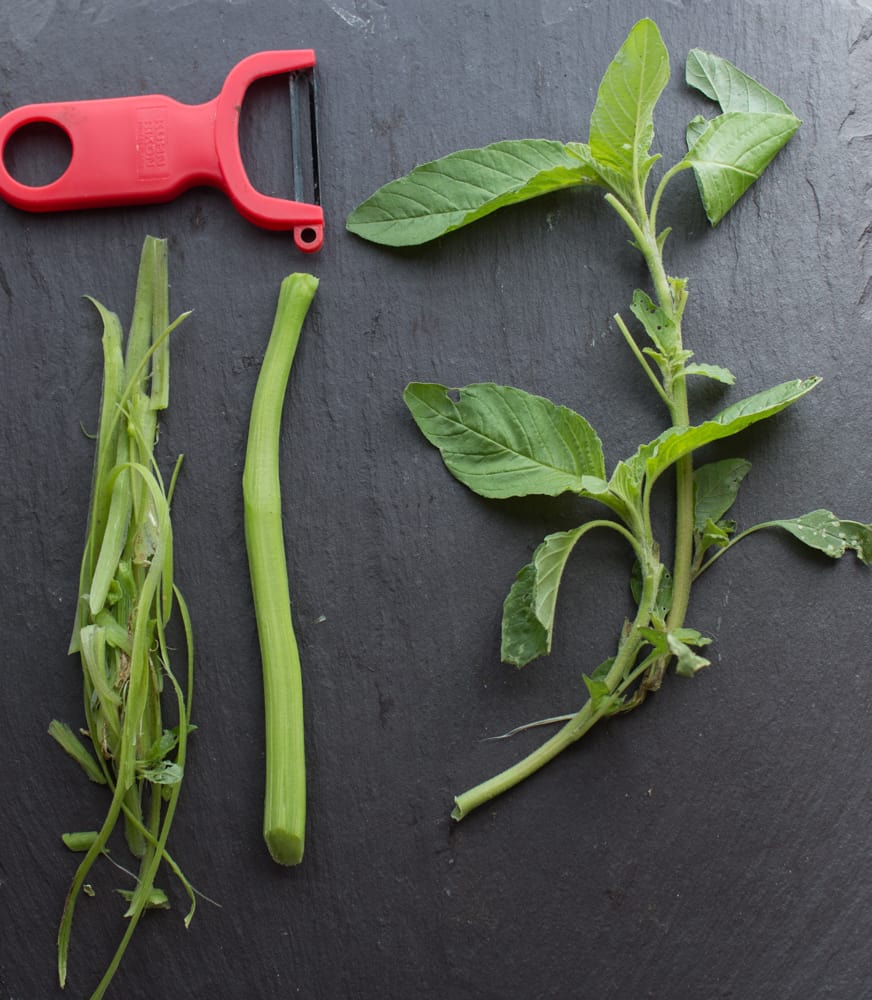
I was surprised to hear over dinner that they all ate foods and fruits that the others didn't in their region (they also spoke different languages as their native tongue). One similarity though, was that they all knew what the wilted amaranth at the table was. Food is the ultimate culture-bridging topic, and one I think is fascinating when the subject is traditional foods, especially plants and mushrooms.
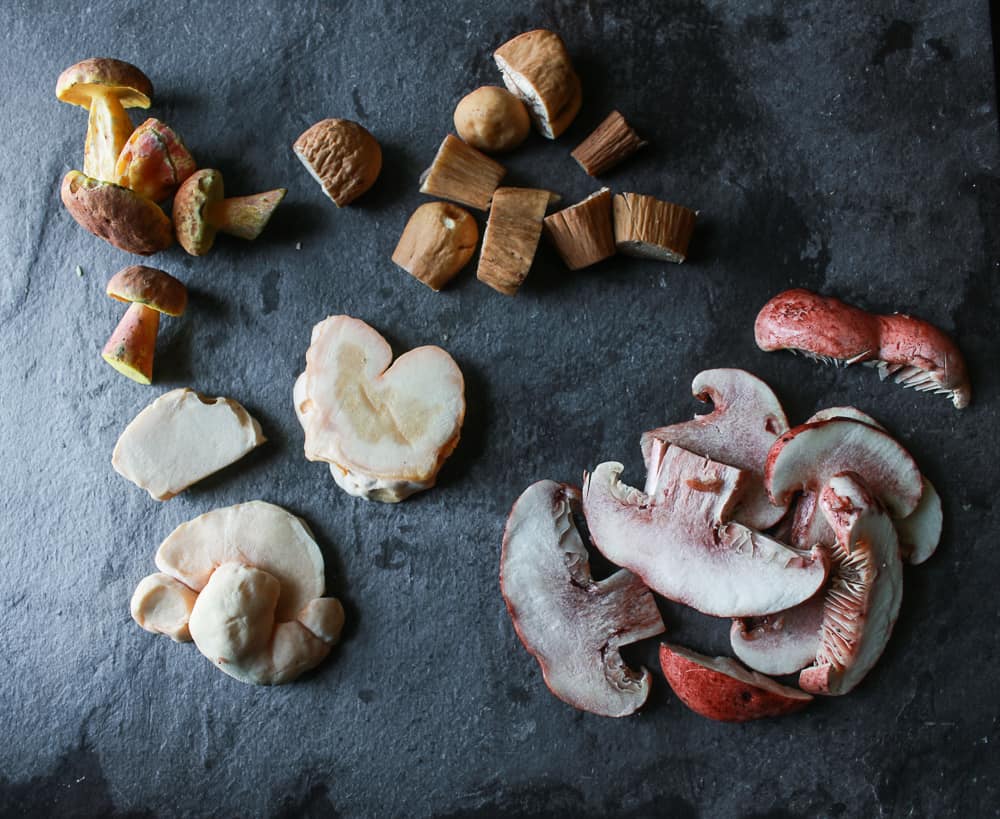
A couple days later, I was thinking of how much I enjoyed the dinner that I got a craving for amaranth so I made a panful during mushroom season with a mix of mushrooms like chicken of the woods, waxy caps, and black trumpet mushrooms. It's a simple variation on my favorite wilted green prep: garlic, olive oil, lemon and chili. It's a great way to use up a nice pile of greens from thinning the garden.
Wilted Amaranth With Garlic, Chili and Mushrooms
Ingredients
- ½ lb fresh young amaranth leaves washed and dried
- 4 ounces fresh wild mushrooms cleaned and set on towels to dry
- 1 tablespoon thinly sliced chesnok garlic or another hardneck garlic variety
- 2 tablespoons unsalted butter
- 1 tablespoon extra virgin olive oil
- Fresh squeezed lemon juice to taste
- Crushed red pepper flakes to taste
- Kosher salt to taste
Instructions
- In a large saute pan, (preferably 10 inch) heat the garlic with the butter and oil on medium heat, stirring occasionally until the garlic is golden and aromatic-turn the heat down low towards the end to really get the garlic brown and toasty.
- When the garlic is lightly browned, add the mushrooms and a pinch of salt and stir.
- Continue to cook slowly until the mushrooms have released some of their juice and are completely cooked and wilted. Add the greens, chili flakes, mix and add the stock. Cover and simmer until the greens are tender and the pan is nearly dry. keep an eye on it so it doesn't burn.
- Double check the seasoning for salt and adjust until it tastes good to you. You can drizzle a thread of extra virgin olive oil over it at the end. Serve with lemon wedges.

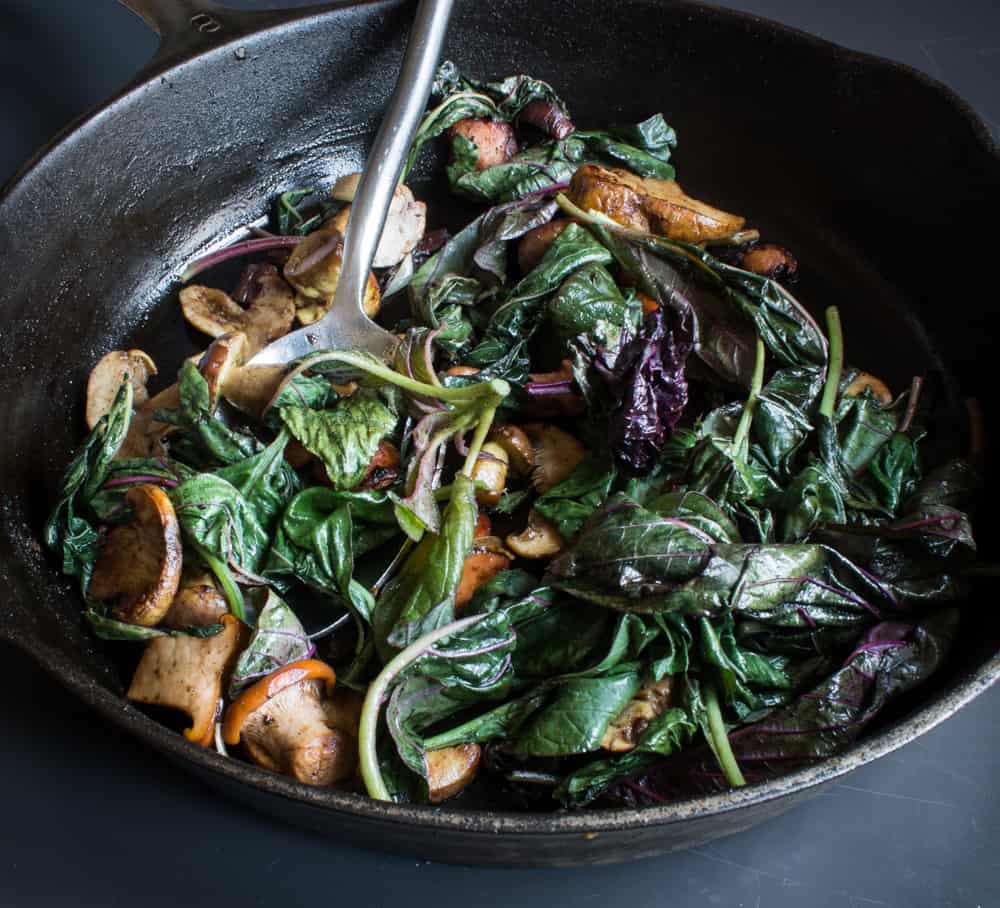
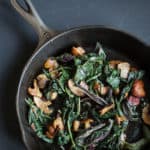
Jamie S
Love this recipe! I'll definitely try swapping out amaranth for lambs quarter, nettles or dock.
Alan Bergo
Hi Jamie, yes you can mix and match your favorite plants here.
Kathleen Rodgers
Which club fungus were you using ?
Alan Bergo
Those should be C. pistillaris, I eat them on occasion, they're not bad at all, at least the ones I've tried. Typically growing with oak/hardwoods in MN.